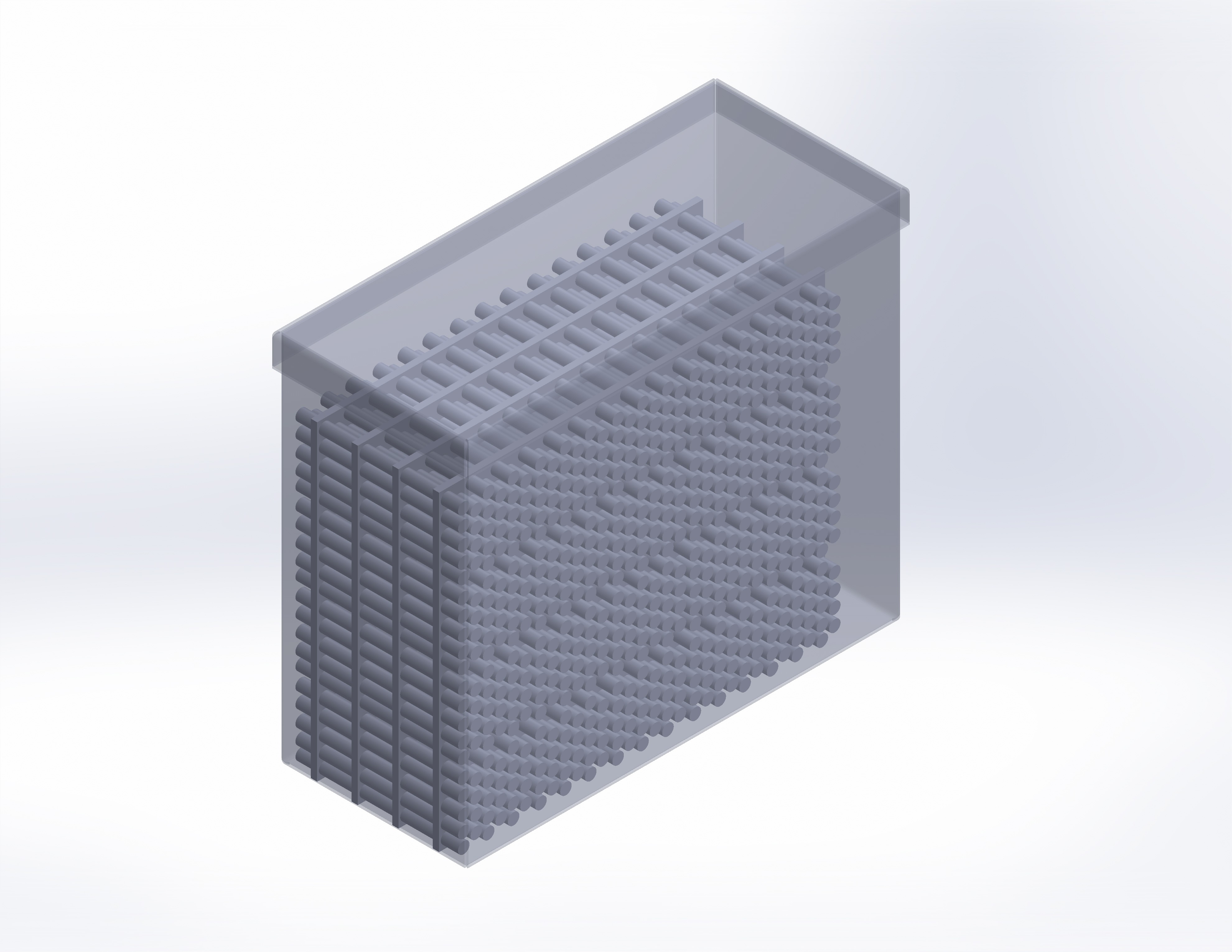I began designing the PowerPack Lithium Battery enclosure. I developed the form factor rather arbitrarily based on averages from an article that looked at Pedestrian Crashes - A Methodology for the Geometric Standardization of Vehicle Hoods to Compare Real-World Pedestrian Crashes. That set the footprint that I wanted to achieve with this enclosure. I started with the a lithium battery enclosure because I felt that would be the most difficult to do. I would be packing as much as 2700 cells (100 groups in series, 27 cells per group all in parallel) in this pack if I want to achieve a ~30 KWhr pack. With the current fitment I was able to get to 80 cells, but that was with a rather conservative cold plate design that can definitely be slimmed down. The cold plate could be a whole project in itself, but at this time I am just taking a dead simple approach that I know can work.
The key features of this stage in the design was the attempt to make it water tight, ideally IP68 but with this approach to sealing further testing is required to verify that, and easy to construct. The enclosure is large, so would require a rather large press brake or a box and pan brake, but the intent is to epoxy the edge together. This was chosen over riveting and welding because of several reasons. The enclosure is made from 5052-H32 aluminum, which is great for folding, but, like many aluminum alloys, undergoes a significant change when welded, to the point where the welded joint is significantly weaker than the un-heat affected metal. That coupled with the fact that it's cheaper and easier to epoxy the edges together than to rivet and epoxy or weld, made it a clear choice. It must be said, however, that this does increase the overall manufacture time for the enclosure depending on the epoxy cure time, and also would probably require some jig to hold the enclosure while the epoxy cures.
The lid is fastened using quarter turn fasteners which primarily function to compress the weatherstripping seal. The weatherstripping meets ASTM E283 which actually focuses on air movements in buildings, but does have a test method for water access as well. That seal, plus the design of the enclosure, should ensure a watertight enclosure to store sensitive items like lithium batteries and electronics.
Finally, a breather vent was added to equalize the humidity inside and outside of the box. This vent is waterproof, but still allows air to pass from within the box to the surroundings to ensure no condensation will form inside the enclosure. This could also serve to help with rapid pressure changes, but that is unlikely to happen, and it uncertain if the breather vent is large enough to exchange the air quickly enough.
A preliminary fit test. As of now I can only fit in 80 modules in series (each module has 27 cells in parallel). The goal is to get to 100, which would require a reduction in the cooling plate size.
 James Nee
James Nee
Discussions
Become a Hackaday.io Member
Create an account to leave a comment. Already have an account? Log In.